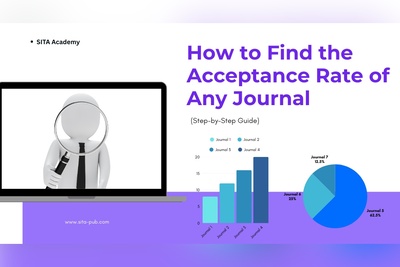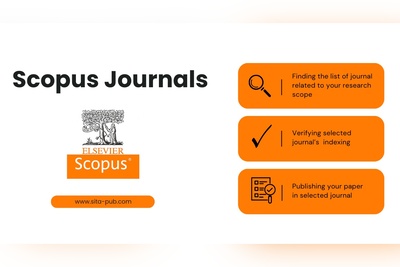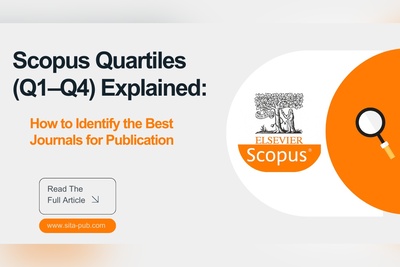Fast Track Publication Services in ISI Journals
Many academics and researchers urgently seek fast-track options for publishing in ISI (Web of Science) journals to meet graduation, promotion, or funding deadlines. Learn how fast-track publishing works, which journals offer it.

Publishing in ISI-indexed journals (also known as Web of Science journals) is a prestigious achievement for researchers around the world. Whether you're pursuing academic promotion, completing your thesis, or racing against a grant deadline, timely publication in a reputable ISI journal can be critical to your success.
One of the most frequently asked questions we receive is:
“Are there ISI journals that offer fast publication?”
The answer is: yes — but with important caveats. Most high-quality ISI journals conduct thorough peer review, which naturally takes time. However, certain strategies and journal programs can help you accelerate the process without compromising scientific integrity.
In this article, we’ll explain what fast track publication in ISI journals means, why it matters, and how you can take advantage of it responsibly.
What Is Fast Track Publication in ISI Journals?

Fast track publication (also known as accelerated review or priority publishing) is an editorial service that shortens the typical review timeline for selected submissions. While standard publication might take 6 to 12 months, fast track articles may be reviewed, revised, accepted, and published within 4 to 10 weeks.
Importantly, this does not mean the review is less rigorous. The article still undergoes peer review — but with expedited processing by the editorial office and reviewers.
Why Do Researchers Seek Fast Track ISI Journals?
There are several reasons why researchers actively look for faster publication options in ISI journals:
Graduation Requirements: Many postgraduate programs require publication in a Web of Science (ISI) journal before a degree is awarded.
Faculty Promotions: Academic career advancement often hinges on timely publications in indexed, high-impact journals.
Grant and Project Deadlines: Funding agencies may require accepted or published papers within specific timelines.
Intellectual Competition: Fast publication ensures that your ideas are shared before similar research enters the academic space.
Do All ISI Journals Offer Fast Track Services?
No — only some ISI-indexed journals offer fast track publication options. Availability depends on:
Editorial capacity
Subject area
Publisher policy
Availability of expert reviewers
You’ll usually find this information under:
“Instructions for Authors”
“Submission Guidelines”
A dedicated section labeled “Fast Track” or “Accelerated Review”
What Does Fast Track Publishing in ISI Journals Cost?

Unlike open-access Scopus journals (which often publish under Article Processing Charges), many ISI journals are subscription-based. This means:
There might be no APC at all (especially in hybrid journals).
If fast track services are offered, they may or may not include an additional fee.
Here’s what to expect:
Fee Type | Expected Range |
Standard ISI APC (if any) | $0 – $3,000 USD |
Fast Track Surcharge | $300 – $1,500 USD |
Caution: Be wary of fraudulent or predatory journals claiming to be ISI-indexed while charging exorbitant “fast track” fees. Always verify the journal through Clarivate’s Master Journal List or Web of Science.
How to Identify ISI Journals with Fast Track Options
1. Visit the Journal Website
Check for any mention of:
"Fast Track"
"Priority Review"
"Accelerated Submission"
“Rapid Communication” (common in medical and engineering fields)
2. Check the Publisher's Platform
Major publishers like Springer, Wiley, Elsevier, Taylor & Francis, and Sage often host ISI journals that mention turnaround times.
3. Use Clarivate’s Tools
Search the Master Journal List or Journal Citation Reports (JCR) to filter by discipline and impact factor, then investigate those journals individually.
4. Ask Your Supervisor or Library
Experienced mentors and academic libraries can often recommend journals in your field that have shorter processing times.
5. Use Research Support Services
Academic platforms like SITA Academy can help you:
Identify appropriate fast-track journals
Format and submit your manuscript
Communicate with journal editors on your behalf
Typical Fast Track Timeline in ISI Journals
Stage | Expected Duration (Fast Track) |
Editorial Screening | 3–7 days |
Peer Review | 2–3 weeks |
Author Revisions | 1–2 weeks |
Final Acceptance | 1 week |
Online Publication | 4–6 weeks |
In total, fast track publication may take 1 to 2.5 months, compared to 6 to 12 months for standard review.
Tips to Speed Up Your ISI Publication (Without Fast Track)
Even if your target journal doesn’t officially offer a fast track option, you can still improve your timeline:
Submit a flawless manuscript: Well-structured, language-edited papers move faster.
Choose the right journal: Target journals with faster review history or smaller backlogs.
Write a compelling cover letter: Briefly explain if time is a factor (e.g., graduation requirement).
Use preprint servers: Share your findings while awaiting peer review.
Avoid desk rejection: Ensure your paper fits the journal’s scope and guidelines exactly.
Final Thoughts
Fast track publication in ISI journals is a strategic solution for researchers working under time pressure. While not all journals offer this option, many in high-demand or time-sensitive disciplines do. By doing your research, preparing a strong manuscript, and seeking expert guidance when needed, you can meet your academic goals without sacrificing quality or credibility.
Need Help Publishing Fast in an ISI Journal?
SITA Academy offers full academic publishing support, including:
Matching your paper with fast-track ISI journals
Formatting to journal guidelines
Communicating with editors on your behalf
Submission and follow-up assistance
Ensuring you meet your deadlines with confidence

Contact us today and get your research on the fast track to success.
Verified Contact Channels
If you have any questions, inquiries, or would like to learn more about our services, please don't hesitate to reach out to us. Our dedicated team is ready to assist you.












